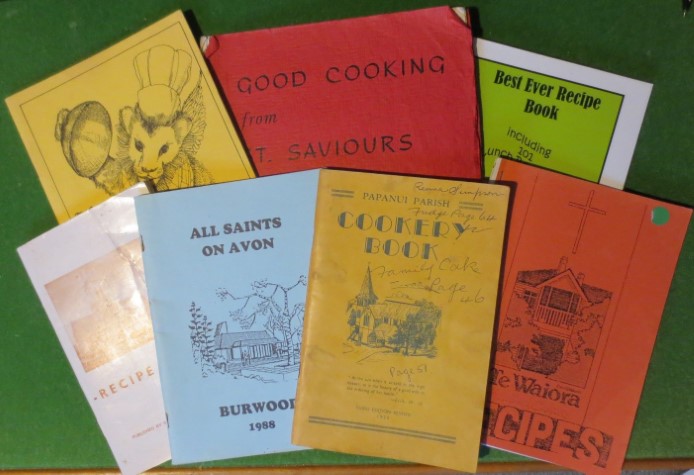There was two tablespoons (50g) of yeast left in the jar and about one cup (125g) of flour in the bag when I added these two ingredients to the list I had made out for my trip to the local supermarket. With rumours abounding that the shelves had been swept clean of both these essentials I was pleasantly surprised to put flour into the trolley. It took a while to find the yeast, hidden on the top shelf in a different container from the one I was used to. While I was there I decided to add a few more things, ground ginger (the packet in the cupboard had a use by date of eons ago), raspberry jam (my Christmas present from my sister had disappeared with speed and alacrity on toast) and some butter.
Back on home turf I was now able to join the hundreds of thousands of New Zealander’s that had returned to home cooking during the lock-down. Not that I had actually left it as I regularly made yeast buns and slices for lunches. Which recipe book should I use? Edmonds perhaps? Richard Till? Or one of the many Anglican recipe books that I have in my collection, and if so—which one?
The list of known New Zealand Anglican Recipe Books can be found amongst the John Kinder Library Topic Guides http://kinderlibrary.libguides.com/c.php?g=669167 [1]. The earliest known one from the Canterbury area is dated 1903 [2] and the most recent one was published by St John’s Woolston in 2017 [3]. Within these books there were hundreds of recipes for me to choose from. However given the ginger I had put in my recyclable bag, I obviously had something non- sweet in mind.
I nearly gave up on recipes with ginger as I passed over a multitude of possibilities that contained condensed milk eg Caramel Slice, Lolly Cake and Chocolate Chip Biscuits. I almost made Ginger Oat Crunch [4], but then realised there were no rolled oats in the cupboard. Professional Ginger Nuts appealed [5] but in the end it was Ginger Crunch in the Best Ever Recipe Book [6]. Despite there being no instructions other than “Bake in a slice tin”, I was pretty sure I could get it into the oven without too much of a disaster, although I had to locate the self raising flour rather than the “ordinary” kind I usually used.
It turned out OK and although I was tempted to put the slices into the freezer to keep marauding hands at bay (mine), I am enjoying it one piece at a time with my afternoon tea.
There is however, no doubt another lingering question—why all those Anglican recipe books on the shelves? Because, as community cookbooks they tell us so much about the way in which New Zealand’s Food History and the way it has evolved over the years [7]. I’m trying to add to the small Diocesan collection as well. If you have one that is not already on the shelves, and after the lock-down you are prepared to gift it, or allow it to be photocopied, then contact the archives.

[1] Teal, FJ. Towards a Bibliography of Anglican Cook Books
[2] Teal, FJ. ms 2017 Charlotte’s Cook Book A Paper Presented to the New Zealand Food History Symposium, Christchurch.
[3] St John’s Woolston Cookery Book Celebrating 160 years 1857-2017.
[4] Woolcott, Margaret p 65 of The Anglican Parish of Kaiapoi Recipe and History Book 2013; see also p15 Te Waiora Recipes nd
[5] Rodger, Alice p112 in St Martin’s Spreydon Cook Book 1995
[6] Anon p120 in Best Ever Recipe Book. St Michael’s Church School PTFA Fundraising Recipe Book.2001.
[7] See Leach, HM(ed) 2010 From Kai to Kiwi Kitchen New Zealand Culinary Traditions and Cookbooks. Otago University Press.
